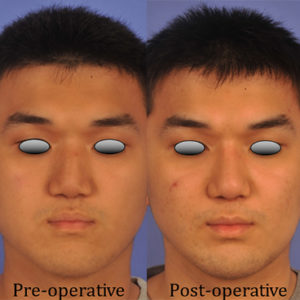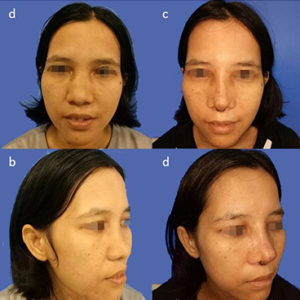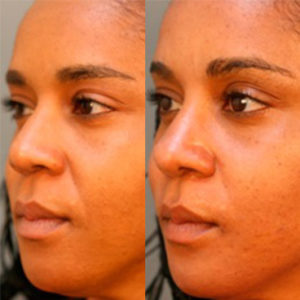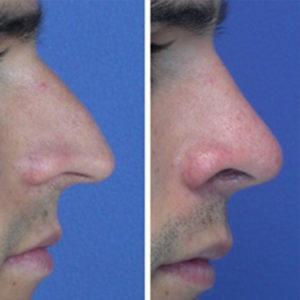Introduction Premaxillary and perialar retrusion is a common finding in Asians and Africans1,2. Being in the immediate vicinity of the nose, these anatomic features directly affect the cosmetic outcome of rhinoplasty and thus warrant the attention of the rhinoplasty surgeon. We conceptualize this anatomic anomaly as a spectrum from mild premaxillary and perialar retrusion to… [Read More]
Ethnic Rhinoplasty
Acellular Dermal Matrix (ADM) in Asian tip and dorsal augmentation rhinoplasty
Introduction Asian nasal anatomy different form western nose. Asian nose have low nasal bridge, weak cartilages, poor nasal projection and poor tip definition. Most of the operation in Asian nose is augmentation rhinoplasty. There are many material for augmentation rhinoplasty. Autologous material that commonly used are conchal cartilage, septal cartilage, costal cartilage and dermo fat… [Read More]
Spreader and L-Shaped Augmentation Rib Graft in Asian Septorhinoplasty
Abstract Asian septorhinoplasty is a surgery procedure for reconstructing the nose with improving the air flow of the nose. Augmentation is the most commonly performed technique by increase the height of the pyramid of the nose, both dorsum and nasal tip projection. Augmentation rhinoplasty using spreader and L-shaped cartilage rib graft can improve the nasal… [Read More]
Rhinoplasty in Small Bulbous Asian Noses: Some Special Surgical Techniques to Consider
Introduction Asia is a big continent, nose morphology changes from different regions. Often times when Asian rhinoplasty is the topic, it is the Eastern Asian nose that is talked about. East Asia is geographically divided into Far East Asia and South East Asia; and the South East Asian noses are one of the smallest noses… [Read More]
Asian Rhinoplasty
1. Anatomical characteristics As a result of the diverse ethnicities in Asian populations, the anatomic characteristics of Asians vary greatly. Although there are substantial variations, in the typical Asian nose, the nasal skin tends to be thicker than Caucasian noses, with abundant subcutaneous soft tissue. The tip of the nose is usually low and the… [Read More]
Asian Rhinoplasty 2
Introduction The Continent of Asia consists of several races and ethnic nasal shapes. Asian noses vary in height and width from the noses of the Indian subcontinent with their Caucasian nasal features, the Persian/Middle Eastern nose with their Mediterranean type features to the relatively smaller East Asian type Korean – Chinese nose and the Asian… [Read More]
Middle East nose in Rhinoplasty
Abstract / Synopsis Race and ethnicity have no scientific or anthropologic validity, yet nasal plastic surgeons continue to categorize patient demographic variables according to racial and ethnic lines. Ethnicity tends to include race but is also dependent on culture, language, religion, and nationality. Here we discuss the most common features of the Middle Eastern nose… [Read More]
African American Rhinoplasty
Introduction Rhinoplasty in African-Americans has become an increasingly common and accepted procedure, and facial plastic surgeons must be skilled in creating a harmonious “ethnic” nose. In a recent study by the American Academy of Facial Plastic and Reconstructive Surgery, when given multiple options for facial plastic surgery, African Americans most commonly choose a rhinoplasty (1)…. [Read More]
Rhinoplasty in the Latino Nose
Abstract Latino patients are also known as hispanic or mestizo and are a combination of different ethnic groups that originate from Spanish speaking countries from around the world. When performing surgery on this group of ethnic patients, the goals are to achieve a natural looking appearance preserving patient’s ethnic features and hopefully fulfilling the patients’… [Read More]









